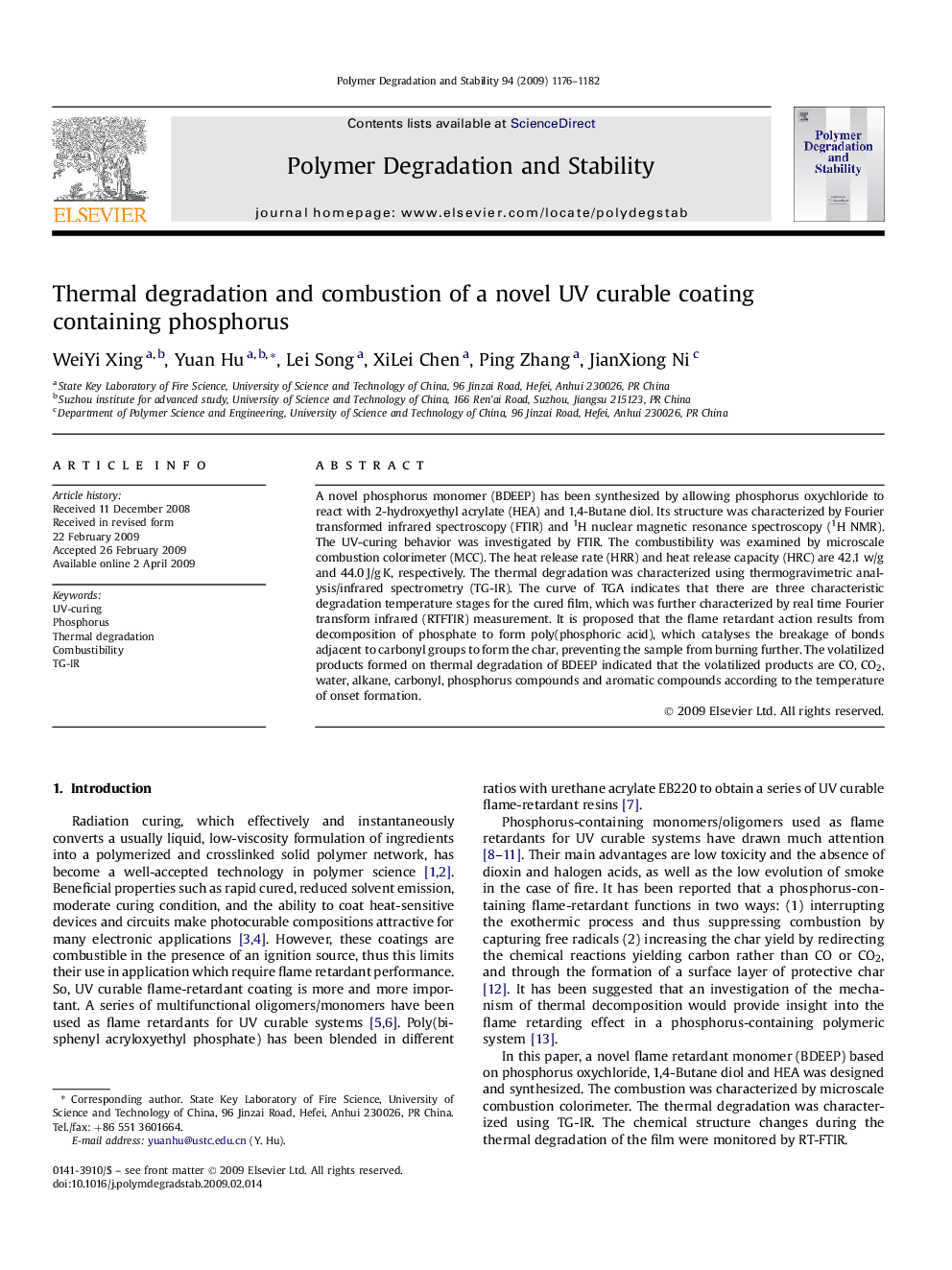| Article ID | Journal | Published Year | Pages | File Type |
|---|---|---|---|---|
| 5203154 | Polymer Degradation and Stability | 2009 | 7 Pages |
Abstract
A novel phosphorus monomer (BDEEP) has been synthesized by allowing phosphorus oxychloride to react with 2-hydroxyethyl acrylate (HEA) and 1,4-Butane diol. Its structure was characterized by Fourier transformed infrared spectroscopy (FTIR) and 1H nuclear magnetic resonance spectroscopy (1H NMR). The UV-curing behavior was investigated by FTIR. The combustibility was examined by microscale combustion colorimeter (MCC). The heat release rate (HRR) and heat release capacity (HRC) are 42.1 w/g and 44.0 J/g K, respectively. The thermal degradation was characterized using thermogravimetric analysis/infrared spectrometry (TG-IR). The curve of TGA indicates that there are three characteristic degradation temperature stages for the cured film, which was further characterized by real time Fourier transform infrared (RTFTIR) measurement. It is proposed that the flame retardant action results from decomposition of phosphate to form poly(phosphoric acid), which catalyses the breakage of bonds adjacent to carbonyl groups to form the char, preventing the sample from burning further. The volatilized products formed on thermal degradation of BDEEP indicated that the volatilized products are CO, CO2, water, alkane, carbonyl, phosphorus compounds and aromatic compounds according to the temperature of onset formation.
Related Topics
Physical Sciences and Engineering
Chemistry
Organic Chemistry
Authors
WeiYi Xing, Yuan Hu, Lei Song, XiLei Chen, Ping Zhang, JianXiong Ni,
